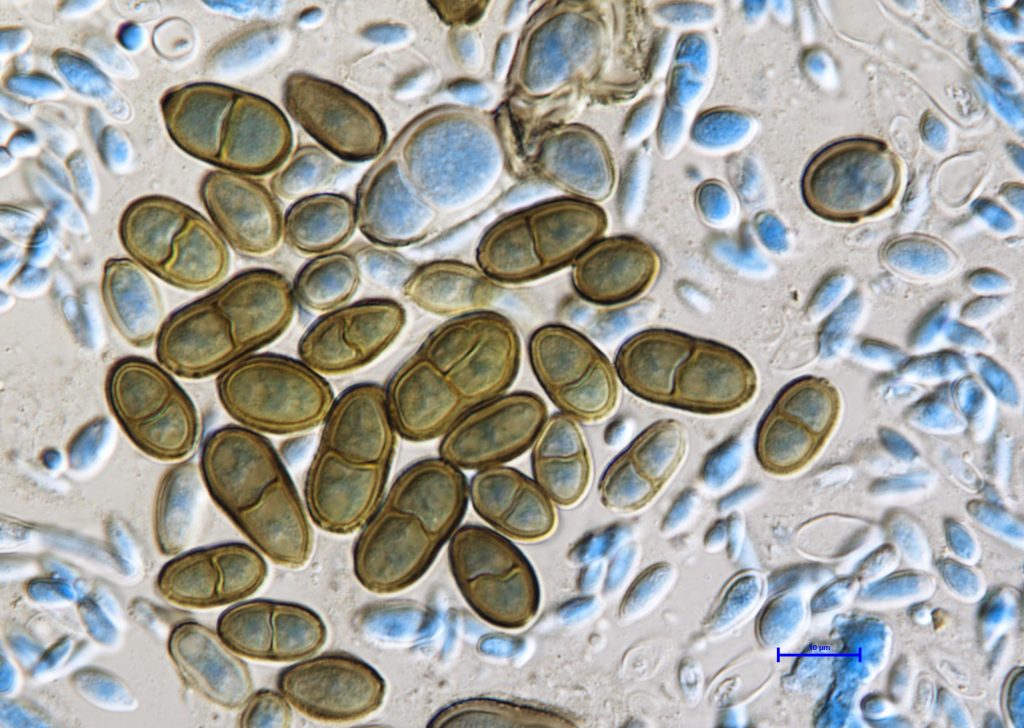
July 26, 2024


The goal of the Slovenian ARRS project, “Selective extraction of high-value molecules from forest products processing residues in the specialty chemicals sector,” was to valorize byproducts generated in sawmills and the pulp and paper industry. Specifically, debarking water and bark water, which usually need expensive treatment procedures (i.e., these byproducts cannot be released into the environment untreated), and bark, which is currently poorly valorized (e.g., used for energy through burning).
The project concentrated on polyphenolic compounds, a heterogeneous family of molecules varying in size and other chemical properties present in large amounts within these byproducts that also have known beneficial health effects. Collecting these polyphenolic compounds could lead to their reuse in the pharmaceutical, food or cosmetic industries and reduce the use of fossil-based chemicals. During the project, InnoRenew CoE joined forces with the Jožef Stefan Institute, Arhel, the University of Primorska and the University of Ljubljana, Faculty of Pharmacy. This combination of knowledge and expertise made the project successful.
During the project, the polyphenolic composition of debarking water, bark press water and bark extracts were determined. Results showed that water extracts from bark, which are preferred in large quantity applications instead of alcoholic extractions, showed a lower variety and quantity of extracted phenolic compounds than the alcohol:water mixture; however, the amount was still large enough to be used in applications. It was also found that similar compounds were determined in bark water extracts and debarking water/bark press water. However, the latter had a smaller variety of compounds. Similar compounds were determined as found in other research, but it is of high importance that bark is processed as shortly as possible to have an efficient polyphenol collection procedure because the variety and quantity of polyphenolic compounds decrease rapidly with time. It was also found that debarking water itself is not the ideal source of polyphenolic compounds for further processing since it has lower phenol concentrations and a really low antioxidant potential. It seems that these matrices are instead a source of higher molecular weight tannins and lignin. On the other hand, bark press water could be an interesting source of polyphenolic compounds.
Therefore, bark water extracts were chosen for research into a collection of polyphenolic compounds from complex water-based solutions with nanosized Fe3O4 particles. These particles were either unmodified or modified with citric acid or cetrimonium bromide (CTAB). The aim was to demonstrate a system that could be advantageous over conventional adsorption/desorption systems. The most widely used are adsorption beds with typical materials such as zeolite, activated carbon, silica gel, alumina or synthetic resins because of the magnetic properties of the particles. The latter enables them to operate continuously, because they are easily removed from a solution, subsequently desorbed of polyphenols with small volumes of solvents (regenerated) and returned to the solution, and do not encounter problems such as uneven saturation of the adsorption bed and long processing time for the wastewater to run through the whole adsorption bed. Therefore, they can be deployed into existing technology and infrastructure, providing few barriers to operational uptake. Results showed that a single adsorption on the (un)modified Fe3O4 particles collects only a small amount of the polyphenolic compounds in bark water extracts. However, it was demonstrated that even after 15 adsorption/desorption cycles, the magnetic particles retain their ability to bind polyphenols. Therefore, the particles are reusable, and a system can be set up to collect the polyphenolic compounds in several short adsorption-desorption cycles, accumulating the polyphenolic compounds with each cycle.
Another topic of this project was investigating whether the polyphenolic compounds can be separated into individual compounds once they are extracted (or at least to a class of compounds within this chemically diverse family). Therefore, tests were done to see if polyphenolic compounds could be separated on monolithic columns. These columns can handle large sample volumes (up to 25 liters) in fast separation and easy regeneration (i.e., allowing a relatively long service life). Results showed that by optimizing the pH, ethanolic and salt concentrations, it was possible to successfully separate phenolic acids and phenolic aldehydes.
Furthermore, an extensive LCA analysis was performed to compare the economic and environmental benefits of using bark press water or debarking water as a source of polyphenolic compounds instead of fossil fuels. The potential of different industrial extraction and separation systems were compared (adsorption beds, spray drying, HPLC separation, ultrafiltration) for their use on a larger scale.
This work was presented at several national and international conferences. Nika Malečkar defended her diploma thesis on Fe3O4 particle modification with citric acid and cetyltrimethylammonium bromide. Tanita Kupčič defended her master’s thesis on polyphenolic compound determination in bark extracts and debarking water. The project also positively influenced other subjects; for example, developed methods were used to determine polyphenolic compounds in different matrices such as olive mill wastewater, Helichrysum and silver fir bark. The knowledge gained about FTIR and UV techniques helped with the research on protein detection in fire effluents. Also, extra understanding of LCA processes helped apply the knowledge on fire effluents, which led to several articles published in peer-reviewed journals and offered important input to Katja Kramberger’s doctoral thesis.
Dr. Kelly Peeters, InnoRenew CoE researcher